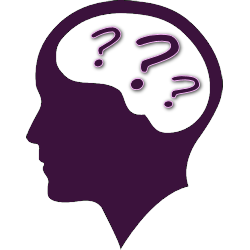The Causes and Prevention of Math Anxiety
Lesson Plans > MathematicsThe Causes and Prevention of Math Anxiety

Mathematics anxiety has been defined as feelings of tension and anxiety that interfere with the manipulation of numbers and the solving of mathematical problems in a wide variety of ordinary life and academic situations Math anxiety can cause one to forget and lose one’s self-confidence (Tobias, S., 1993).
Research confirms that pressure of timed tests and risk of public embarrassment have long been recognized as sources of unproductive tension among many students. Three practices that are a regular part of the traditional mathematics classroom and cause great anxiety in many students are imposed authority, public exposure and time deadlines. Although these are a regular part of the traditional mathematics classroom cause great deal of anxiety. Therefore, teaching methods must be re-examined. Consequently, there should be more emphasis on teaching methods which include less lecture, more student directed classes and more discussion.
Given the fact that many students experience math anxiety in the traditional classroom, teachers should design classrooms that will make children feel more successful . Students must have a high level of success or a level of failure that they can tolerate. Therefore, incorrect responses must be handled in a positive way to encourage student participation and enhance student confidence.
Studies have shown students learn best when they are active rather than passive learners (Spikell, 1993). The theory of multiple intelligences addresses the different learning styles. Lessons are presented for visual/spatial, logical/mathematics, musical, body/kinesthetic, interpersonal and intrapersonal and verbal/linguistic. Everyone is capable of learning, but may learn in different ways. Therefore, lessons must be presented in a variety of ways. For example, different ways to teach a new concept can be through play acting, cooperative groups, visual aids, hands on activities and technology. Learners are different than they were forty years ago. These learners today ask questions why something is done this way or that way and why not this way? Whereas years ago learners did not question the why of math concepts; they simply memorized and mechanically performed the operations needed.
Students today have a need for practical math. Therefore, math needs to be relevant to their everyday lives. Students enjoy experimenting. To learn mathematics, students must be engaged in exploring, conjecturing, and thinking rather than, engaged only in rote learning of rules and procedures.
Students' prior negative experiences in math class and at home when learning math are often transferred and cause a lack of understanding of mathematics. According to Sheila Tobias, millions of adults are blocked from professional and personal opportunities because they fear or perform poorly in mathematics for many, these negative experiences remain throughout their adult lives.
Math is often associated with pain and frustration. For instance, unpaid bills, unforeseen debts, unbalanced checkbooks, IRS forms are a few of the negative experiences associated with numbers. Parents should show their children how numbers are successfully used by them in positive pleasant ways, such as in cooking, sewing, sports, problem solving in hobbies and home repairs.
Math must be looked upon in a positive light to reduce anxiety. A person’s state of mind has a great influence on his/her success. Many games are based on math concepts. Some games that are beneficial to learners and are enjoyed are cards playing, Life, Yahtzee, Battleship and Tangrams.
With all the tension and anxiety, math humor is greatly needed. Young children enjoy cartoons and jokes. Cartoons may be used to introduce a concept or for class discussion. Most children will master mathematical concepts and skills more readily if they are presented first in concrete, pictorial and symbols. For example manipulatives are concrete objects used to teach a concept. By using manipulatives, pictures and symbols to model or represent abstract ideas, the stage is set for young learners to understand the abstractions they represent. Students enjoy the change from lecture and books and they are more inclined to explore with manipulatives and show greater interest in classwork.
Cooperative groups provide students a chance to exchange ideas, to ask questions freely, to explain to one another, to clarify ideas in meaningful ways and to express feelings about their learning. These skills acquired at an early age will be greatly beneficial throughout their adult working life.
In conclusion, math anxiety is very real and occurs among thousands of people. Much of this anxiety happens in the classroom due to the lack of consideration of different learning styles of students. Today, the needs of society require a greater need for mathematics. Math must be looked upon in a positive light to reduce math anxiety.
Therefore, teachers must re-examine traditional teaching methods which often do not match students’ learning styles and skills needed in society. Lessons must be presented in a variety of ways. For instance, a new concept can be taught through play acting, cooperative groups, visual aids, hands on activities and technology. As a result once young children see math as fun, they will enjoy it, and, the joy of mathematics could remain with them throughout the rest of their lives.
References
Curtain-Phillips, M (1999). How to Reduce Math Anxiety in the Classroom, at Work and in Everyday Personal Use. Morris Publishing. http://www.mathattack.7p.com
Spikell, M. (1993). Teaching mathematics with manipulatives: A resource of activities for the K-12 teacher. New York: Allyn and Bacon.
Tobias, S. (1993). Overcoming math anxiety. New York: W. W. Norton & Company.
